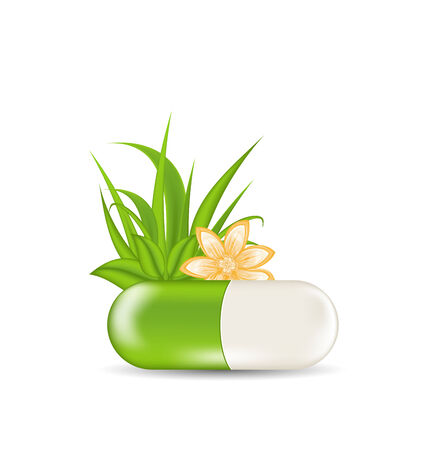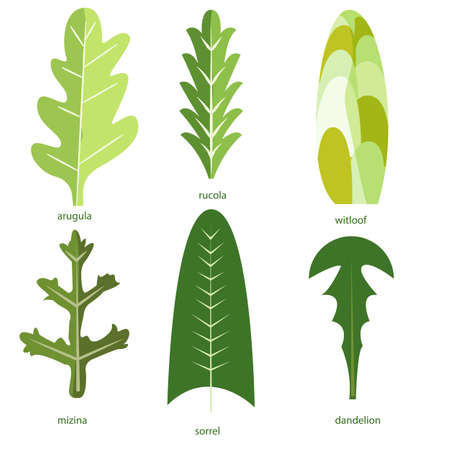Introduction to Tulsi in Ayurveda
Tulsi, also known as Holy Basil, occupies a deeply revered place in Indian households and the spiritual landscape of the country. Fondly called the “Queen of Herbs,” Tulsi is found in courtyards, balconies, and temples across India, often planted in a special altar known as a Tulsi Vrindavan. This sacred plant is not only worshipped daily by millions but has been cherished through centuries for its powerful healing properties. In Ayurveda, Tulsi is celebrated for balancing the body’s doshas—Vata, Pitta, and Kapha—and is considered an adaptogen that helps the body cope with stress and restore harmony. Traditionally offered to deities and used in various rituals, Tulsi’s spiritual significance is matched only by its medicinal value. From soothing coughs to purifying the atmosphere and boosting immunity, Tulsi’s versatility makes it a cornerstone of Ayurvedic formulations. As we explore the benefits of combining Tulsi with other Ayurvedic herbs, it’s essential to understand how this plant bridges the realms of health, spirituality, and holistic wellness in Indian culture.
Core Health Benefits of Tulsi
Tulsi, also known as Holy Basil, holds a sacred place in Indian households and Ayurveda. This revered herb is renowned for its multifaceted health benefits, especially when combined with other Ayurvedic herbs. Understanding Tulsi’s core advantages helps us appreciate why it is a staple in daily wellness routines across India.
Boosting Immunity Naturally
Tulsi is widely recognized for its immune-boosting properties. Rich in antioxidants and essential oils, it strengthens the body’s natural defenses against common infections. In many Indian homes, “Tulsi kadha” or herbal tea made with Tulsi, ginger, and black pepper is a go-to remedy during seasonal changes to prevent coughs and colds.
Stress Relief: A Traditional Approach
Modern life can be stressful, but Tulsi acts as a natural adaptogen. It helps manage stress levels by balancing cortisol production. Traditionally, sipping Tulsi-infused tea after work is a common practice in Indian families to calm the mind and rejuvenate the spirit.
Antibacterial Properties for Everyday Health
Tulsi exhibits powerful antibacterial and antiviral properties. Whether used as a paste on minor wounds or consumed as part of an herbal blend, it helps keep everyday infections at bay. Many Ayurvedic practitioners recommend a mix of Tulsi and Neem leaves to support skin health and fight off bacteria.
Tulsi’s Role in Daily Indian Wellness Routines
| Daily Practice | How Tulsi is Used | Common Combinations |
|---|---|---|
| Morning Rituals | Chewing fresh Tulsi leaves or adding to herbal teas | Tulsi + Ginger + Honey |
| Pooja/Spiritual Use | Offering Tulsi leaves to deities for blessings | Tulsi alone or with sandalwood paste |
| Wellness Drinks | Brewed in kadha for immunity boost | Tulsi + Mulethi (Licorice) + Black Pepper |
| Skin & Hair Care | Pastes or oils applied externally | Tulsi + Neem + Aloe Vera |
The Foundation for Herbal Synergy
The versatility of Tulsi makes it a cornerstone of Ayurvedic combinations. Its integration into daily routines—from morning teas to spiritual rituals—not only enhances physical health but also nurtures emotional well-being. When paired with other Ayurvedic herbs, the holistic benefits multiply, supporting immunity, mental peace, and resilience in the unique context of Indian lifestyles.

3. Synergistic Power: Combining Tulsi with Other Ayurvedic Herbs
In the heart of Indian tradition, Ayurveda emphasises the harmony of body, mind, and spirit through the use of natural remedies. Tulsi, also known as Holy Basil, is deeply respected as a sacred plant in every Indian household. However, when Tulsi is combined with other revered herbs like Ashwagandha, Amla, and Guduchi, the resulting synergy can significantly amplify its holistic health benefits. These combinations are not just popular in Ayurvedic texts but are part of our daily lives—from homemade kadhas to herbal teas served during family gatherings.
Amplifying Immunity and Resilience
Combining Tulsi with Ashwagandha, a powerful adaptogen, supports the bodys resilience against stress and fatigue—a necessity for those navigating bustling city life or rural routines. This dynamic duo works together to balance energy levels while fortifying the immune system, providing a sense of calm strength that is much valued in Indian wellness culture.
Boosting Antioxidant Power
When Tulsi is blended with Amla (Indian Gooseberry), it creates a potent antioxidant powerhouse. Amla is renowned for its high Vitamin C content and rejuvenating properties. Together, they help detoxify the body, support skin health, and promote vitality—mirroring traditional practices where grandmothers hand down recipes for immunity-boosting chutneys and tonics.
Enhancing Detoxification and Longevity
The addition of Guduchi, known as Amrita or nectar in Ayurveda, further elevates the health benefits. Guduchi works alongside Tulsi to purify the blood, support liver function, and enhance longevity. In local communities across India, this blend is often consumed to ward off seasonal illnesses and maintain overall well-being throughout the year.
By combining Tulsi with these time-honoured herbs, we harness the wisdom of Ayurveda to nurture our bodies holistically. Such synergies reflect not only deep-rooted cultural traditions but also offer practical solutions for maintaining robust health in today’s fast-paced environment.
4. Popular Herbal Pairings and Their Unique Benefits
In the vibrant landscape of Indian wellness, Tulsi is often combined with other revered Ayurvedic herbs to create powerful blends that address a wide spectrum of health needs. These combinations are deeply rooted in traditional practices and reflect the holistic approach characteristic of Ayurveda. By pairing Tulsi with specific herbs, each blend is believed to enhance the benefits for both body and mind, supporting modern lifestyles while honouring ancient wisdom.
Tulsi-Ashwagandha: Harmony for Stress Relief
Tulsi and Ashwagandha are often paired in herbal teas to promote emotional balance and resilience. This blend is popular among urban professionals who face daily stressors and need a natural way to restore calm and mental clarity. Ashwagandha, known as Indian ginseng, is a renowned adaptogen that helps the body manage stress, while Tulsi’s calming properties further soothe the nervous system.
Tulsi-Amla: Vitality and Immunity Boost
Tulsi-Amla powders or infusions are celebrated for their immune-enhancing and rejuvenating effects. Amla (Indian gooseberry) is rich in Vitamin C and antioxidants, complementing Tulsi’s detoxifying qualities. Together, they support digestion, strengthen immunity, and nourish skin health—making this blend a household staple, especially during monsoon season when immunity needs extra support.
Popular Tulsi-Based Herbal Combinations Table
| Combination | Main Benefits | Typical Usage |
|---|---|---|
| Tulsi + Ashwagandha | Stress relief, mental clarity, energy balance | Herbal tea |
| Tulsi + Amla | Immunity boost, antioxidant support, skin nourishment | Powder or infusion |
| Tulsi + Ginger | Respiratory support, digestive aid, warmth | Kadha (decoction) |
| Tulsi + Mulethi (Licorice) | Sore throat relief, cough remedy, lung health | Herbal tea or syrup |
Cultural Relevance in Daily Life
In many Indian households, these combinations are not just remedies but rituals passed down generations. Whether it’s sipping on a cup of Tulsi-Ashwagandha tea after work or mixing Tulsi-Amla powder into morning smoothies, these practices embody the spirit of “Swasthya” (holistic well-being). Such blends are also common offerings in temples and community spaces, reflecting their significance in Indian urban culture where space is precious but health remains a priority.
5. Practical Uses in Indian Households
Tulsi, fondly known as the “Queen of Herbs” in India, finds its way into countless homes, not just as a sacred plant but also as a core ingredient in everyday wellness practices. The art of combining Tulsi with other Ayurvedic herbs is deeply rooted in Indian tradition, especially when it comes to household remedies and daily beverages.
Chai with Tulsi and Ayurvedic Blends
In Indian kitchens, chai is more than just a drink—it’s an experience. Many families enhance their morning or evening chai by adding fresh Tulsi leaves along with spices like ginger (adrak), cardamom (elaichi), black pepper (kali mirch), and cinnamon (dalchini). This blend not only boosts immunity but also brings a soothing aroma that fills the home. Elders often say that starting the day with such herbal chai helps keep seasonal colds at bay.
Kadha: The Traditional Immunity Booster
Kadha, a time-honoured decoction, is prepared by boiling Tulsi together with herbs like mulethi (licorice), giloy, cloves (laung), and black pepper. Every Indian grandmother has her own kadha recipe, tailored for coughs, sore throats, or general malaise. By blending Tulsi with these potent herbs, households create a powerful remedy that reflects centuries of Ayurvedic wisdom.
Home Remedies for Everyday Ailments
From minor headaches to digestive issues, Indian families frequently rely on simple home remedies featuring Tulsi blends. For instance, chewing Tulsi leaves mixed with honey and ginger is a common solution for relieving cold symptoms. Similarly, infusing water with Tulsi and fennel seeds (saunf) is believed to aid digestion after heavy meals. These practices exemplify how integrating Tulsi with other Ayurvedic herbs seamlessly fits into daily routines.
The use of Tulsi blends in Indian households isn’t just about health; it’s about preserving cultural heritage through rituals passed down generations. By adopting these practical methods—be it a comforting cup of masala chai or a restorative kadha—families continue to cherish the holistic benefits of Ayurveda right from their own kitchens.
6. Precautions and Cultural Insights
While combining Tulsi with other Ayurvedic herbs offers a wealth of benefits, it is crucial to approach this practice with mindfulness and respect for traditional wisdom.
Dosage Guidance
The potency of Tulsi, especially when paired with herbs like Ashwagandha, Amla, or Brahmi, requires careful consideration of dosage. Traditionally, Ayurveda recommends starting with small quantities—such as 1-2 teaspoons of dried Tulsi leaves per day or a few drops of Tulsi extract—and gradually increasing based on individual response and the guidance of an Ayurvedic practitioner. Overconsumption may lead to imbalances and should be avoided.
Compatibility with Other Herbs
Tulsi blends well with many common Ayurvedic herbs, but not all combinations suit every body type (prakriti). For example, those with pitta constitution may benefit from Tulsi combined with cooling herbs like Shatavari, while vata types might find a Tulsi-Ashwagandha mix more balancing. Consulting a qualified Vaidya (Ayurvedic doctor) helps ensure safe and effective pairing tailored to your unique constitution.
Cultural Respect and Traditional Practices
Tulsi holds deep spiritual significance in Indian households—often revered as a sacred plant associated with purity and protection. Many families avoid consuming Tulsi leaves during menstruation or after touching the plant without washing hands, following age-old customs. It is also customary not to chew Tulsi leaves directly; instead, they are often swallowed whole or used in herbal teas out of reverence for the plant’s divinity. Honouring these beliefs maintains cultural harmony and strengthens one’s connection to India’s living traditions.
Conclusion: Mindful Integration
Incorporating Tulsi and other Ayurvedic herbs into daily routines can be deeply rewarding when done thoughtfully. By paying attention to dosage, understanding herb compatibility, and respecting the sacred status of Tulsi in Indian culture, you can harness their full potential while preserving the integrity of India’s herbal heritage.


